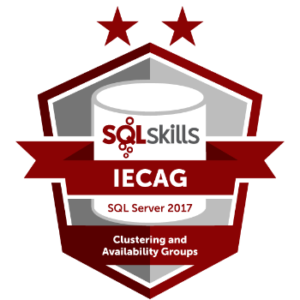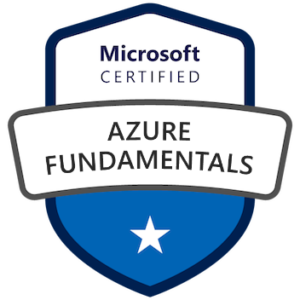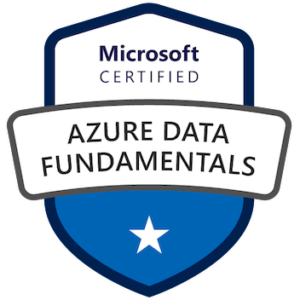Azure SQL Boot Camp Day 1 Key Takeaways
Recently Microsoft hosted an Azure SQL Boot Camp over on the Microsoft Developer page on YouTube. The boot camp consisted of four days of two hour sessions describing the different features of Azure SQL. The hosts were Anna Hoffman and Bob Ward.
This will be the first of a four part series offering you key takeaways from each of the sessions. These takeaway posts by their nature can’t possibly include everything from each session so keep that in mind as you read.
Why Would You Use Azure SQL VMs?
Azure VMs are Infrastructure as a Service. If your on-prem SQL Servers are working just fine, why would you switch to Azure SQL VM?
- You’re committed to migrating at least some part of your servers to the cloud and you want an easy entry point that feels most like your on-prem SQL Servers. Azure Virtual Machines are just what they sound like. You get a VM in Azure’s cloud. Once you install SQL Server on the VM, it looks and feels like the SQL Server of old, because it is. You still have to do some Azure networking and configure access to it. This gets you a gentle introduction to Azure without changing your whole world all at once.
- You are committed to migrating at least some part of your servers to the cloud and you need on-prem, native SQL Serve features such as SSAS, SSRS or SSIS. Possibly you need things like Distributed Transaction Coordinator, Linked Servers or FileStream. If you are using these features on-prem, and you don’t want to change anything about how your environment works, then you need Azure VMs.
- You are committed to migrating at least some part of your servers to the cloud and you need access to the operating system. If your application using your SQL Server needs to do something at the Windows file or other OS level then the Azure VMs offering is your only option.
- Your databases are on the Simple Recovery Model and you don’t want to change that. The other flavors of Azure SQL, namely Managed Instance and SQL DB, require the databases be in Full Recovery Model. Keep in mind though, that the Simple Recovery Model inhibits your ability to recover from a data disaster.So, think long and hard about whether you really want to keep things on that recovery model.
- You have SQL Server 2008 or 2008 R2 in your environment. These versions of SQL Server are out of support on prem. This means no more security updates of any kind. No more adding features to the platform (non-security related updates). If you break it you pay for it. Meaning, if you call Microsoft for help, they won’t help you for free. They may just tell you that you need to upgrade. But, maybe you have legacy apps that are tied to one of these versions of SQL Servers and you still want to migrate them to the cloud. In that case, you have to use Azure SQL VMs. Good news, in Azure you can still get free updates to SQL Server 2008 and 2008R2.
- You can have automated backups and security updates handled by Azure. With Azure handling this, your team has more time for other things.
- Accelerated storage performance with Azure BLOB Caching.
- Virtual networks to integrate with on-prem resources
- Azure VM built-in HA and Azure Storage built-in DR
- Failover Cluster Instance with Azure Premium file share.
How do you migrate to this. One way is to use Azure Site Recovery.
There is more about Azure VMs, but remember, I promised you only key takeways.
What Is Azure SQL Managed Instance All About?
Azure SQL Managed Instance is the next progression toward Platform as a Service. As you progress toward Platform as a Service, more and more features are managed by Azure, leaving you with more time for other things.
Here are some takeaways.
- You want to use this if your company wants to move to the cloud while removing more management and administrative overhead, but you need instance scoped features like SQL Server Agent, Database Mail, CLR, Linked Servers, Service broker, etc.
- Management overhead related to business continuity, high availability and DR are handled by Azure for you. The nature of these features in Azure Managed Instance are determined by things like your service tier (General Purpose or Business Critical).
- The General Purpose Tier offers remote storage, involves the least money, but has only a single instance.
- The Business Critical Tier offers lower latency storage, a readable secondary, and has higher costs.
How do you migrate to this. One way is near zero down time using log shipping.
What is Azure SQL Database All About?
Azure SQL Database is at the far end of the continuum of IaaS versus PaaS. As a PaaS offering, basically everything but the database is stripped away. There is no access to file level structures or the OS. Both server and instance level options to make changes are removed. So what are some characteristics of this offering?
- Fully managed service, meaning that the Azure service handles all SQL upgrades, patching, backups, high availability and monitoring. Thus, almost all administrative functions are handled by Azure. This provides you with the latest stable version of the SQL Server database engine.
- There is no ability to make configuration changes that require a server restart because Azure SQL Database does not provide access to the underlying server.
- Offers access to a single database with its own guaranteed amount of computer, memory and storage resources.
- Elastic Pools in Azure SQL Database allow for multiple, single databases to be managed together, providing predictable behavior for multi-tenant scenarios.
- SQL Database offers General Purpose, Business Critical and Hyperscale service tiers. HyperScale provides storage for large databases (100TB+).
- You can mix a single database deployment with an elastic pool.
How do you migrate to Azure SQL Database? One way to accomplish a migration is discussed here. You can also use the Azure Database Migration Service.
For any of these offerings, I didn’t cover things like the monitoring available with each of these in Azure portal, deployment options or connectivity architecture.
Azure has a lot to offer. There are caveats and usage scenarios for each type of platform within Azure. Please be sure to check out what is and isn’t available from a SQL Server features and management perspective within each offering.
Stay tuned for part 2 of Key Takeaways from the Azure SQL Boot Camp.





[…] anticipated post for day 3 of the recent Azure SQL Boot Camp. Here are the previous posts for days one and two […]